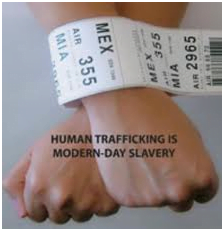This week marks the tenth anniversary of the United Nations Convention on Transnational Organized Crime (signed in Palermo, Sicily of all places). Ahead of a meeting in Vienna, the UN Office on Drugs and Crime (UNODC) released its annual “Threat Assessment” of Transnational Organized Crime. Not surprisingly, trafficking in persons for sexual exploitation remains a top criminal enterprise.
So how big is the market? From UNODC:
National survey data suggest the percentage of men who have purchased sexual services in their lifetimes varies considerably between countries and over time. According to the Kinsey surveys in the 1940s, 70% of adult males reported having paid for sex at least once in their lives, but this was at a time when non-compensated extramarital sex was far less common than today. More recent surveys suggest the figure today is closer to 19%. Recent surveys in other countries suggest a similar figure in Sweden (13%), the Netherlands (14%), Australia (15%) and Switzerland (19%). Spain (39%) is an outlier in Europe, as is Puerto Rico (61%) in North America. The comparable figure is even higher in Thailand (73%).
Extrapolating from International Labor Organization data, UNODC estimates that one in seven sex workers in Europe are trafficking victims. These victims are exploited for, on average, two years. This means that 70,000 women must be trafficked annually to meet market demands. Using other survey data, UNODC deduces:
If there were indeed 140,000 trafficking victims in Europe, they could produce perhaps 50 million sexual services annually. At €50 per client, this would constitute a market worth €2.5 billion (equivalent to some US$ 3 billion) annually.
To sum it up: in Europe about 19% of men purchase sexual services from sex workers. About 1 in 7 of these sex workers are victims of trafficking by organized criminal groups. These groups, in turn, gross about $3 billion annually. Each of these cases are individual tragedies. But taken together this data shows how public policy is failing to protect hundreds of thousands of women from exploitation and abuse.
